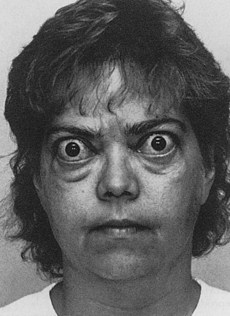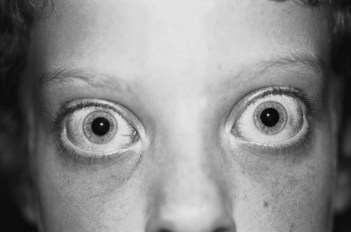137 Exophthalmos
Salient features
Examination
• Prominent eyeballs (Fig. 137.1).
• Look at the patient’s eyes from behind and above for proptosis.
• Comment on lid retraction (the sclera above the upper limbus of the cornea will be seen); this is Dalrymple’s sign (Fig. 137.2).
• Comment on the sclera visible between the lower eyelid and the lower limbus of the cornea (i.e. comment on the exophthalmos). Most patients have bilateral exophthalmos with unilateral prominence.
• Check for lid lag (ask the patient to follow your finger and then move it along the arc of a circle from a point above the patient’s head to a point below the nose—the movement of the lid lags behind that of the globe); this is von Graefe’s sign. Voluntary staring can result in a false lid lag, and the patient must be suitably relaxed before eliciting this sign.
• Check for extraocular movements and comment on the cornea.
• Look for the five important signs of exophthalmos:
Advanced-level questions
What eye signs of thyroid disease do you know?
Werner’s mnemonic, NO SPECS (J Clin Endocrinol Metab 1977;44:203–4):
How would you investigate this patient?
Stay updated, free articles. Join our Telegram channel

Full access? Get Clinical Tree




